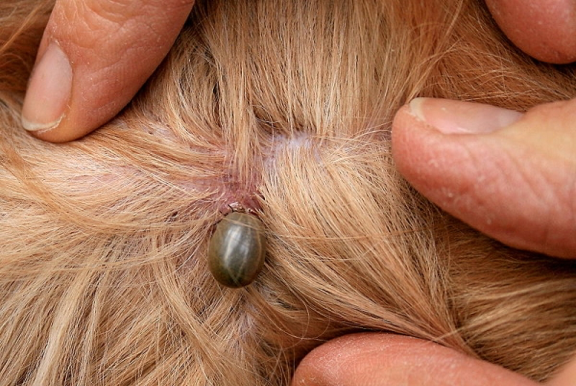While most pet owners know all about fleas, many are not educated on the other main external parasite posing a risk to our pets in the warmer months: TICKS! Like fleas, ticks feed on the blood of their host animal and they like a variety of hosts (dogs, cats, rodents, rabbits, cattle, small mammals). While fleas don’t prefer human blood, ticks have no problem attaching to and feeding from a human host. The main animal I will be focusing on today is the dog, since they are the most common pets walking through our door with a tick, however all outdoor pets are at risk.
Ticks become active in the spring once the temperature reaches 4 degrees Celsius or warmer, but it’s never too early to start tick prevention! Once we start seeing mild temperatures, your outdoor pets should start being treated with a tick preventative. This year, we had a mild winter and saw our first tick of 2016 enter the clinic on March 2nd! You should also be checking your dogs over regularly for any ticks once it starts to warm up, especially if you take your dogs in the woods or walking on trails. Ticks prefer to stay close to the head, neck, feet and ears, so focus on these areas the most.
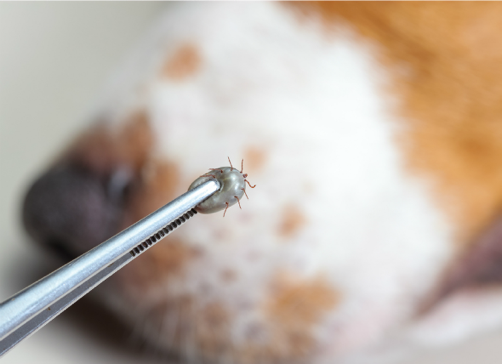
Ticks are larger than fleas and are visible to the naked eye. They are commonly found in wooded areas or in tall grass. Their bites are not usually painful. There are a few different types of ticks in our area that we are concerned about, including the brown dog tick, the American dog tick and the deer tick. The deer tick is the tick we worry about the most, because that is the tick that can carry and potentially infect you or your pet with Lyme disease. There are multiple other parasites and diseases that ticks can carry as well, which is the biggest reason why we want them removed from our pets as soon as possible. It can take several hours for an attached tick to transmit disease, so in most cases removing a tick soon after they bite will usually prevent any disease in your pet.
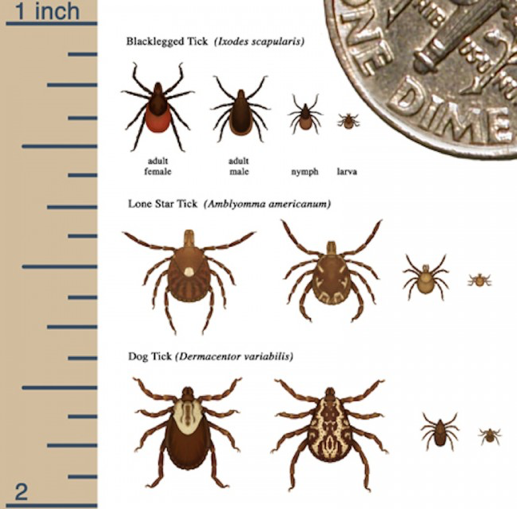
If you find a tick on your dog, it is important to remove it immediately. You must be very careful when removing a tick because if you accidentally leave the head in the animal, it could abscess and cause infection, and any contact with the tick’s blood can potentially transmit disease to your dog or you. The best way to ensure safe removal it is to bring the dog to the vet and have one of the technicians remove it. If you do want to remove it at home, you can pluck it out with tweezers. Make sure to get the tweezers as close to your dog’s skin as possible and pull out in a steady straight motion. You can also pick up a little tool called a “tick twister” from your vet clinic, which is considered a safer choice in tick removal.
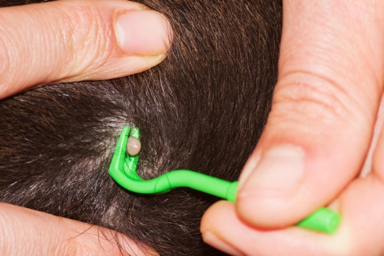
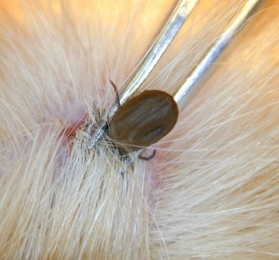
Once the tick is removed, you can bring the tick (alive or dead) into a local vet clinic for us to send away to get tested at the lab for disease. This is recommended so that we know if there is a chance your dog could have been infected with Lyme or any other tick-related diseases. If a tick does come back positive, we will contact you and discuss what this means and whether you should come in to get any related tests done.
The product we recommend most for tick prevention in dogs is Bravecto. It is an oral pork-flavored chew that lasts for three months and is labeled for fleas and ticks. There are also monthly topical options available, such as Advantix and Revolution. While Revolution works extremely well with flea infestations, it isn’t the best product for tick prevention because it doesn’t do all species of ticks and is not effective against the Lyme-transmitting deer tick. You can also try to help prevent ticks by regularly mowing your lawn, removing tall weeds, and avoiding areas where they are commonly found.

If you have any questions about ticks that were not covered here or would like to discuss tick prevention or disease transmission, you can call us at 506-388-8880 to set up an appointment with at VetCare Pet Hospital.
By: Stephanie, RVT


